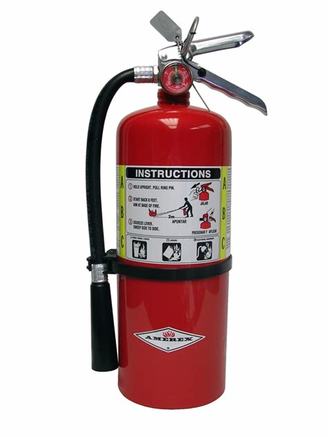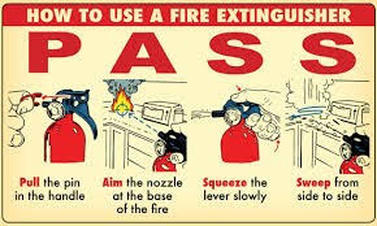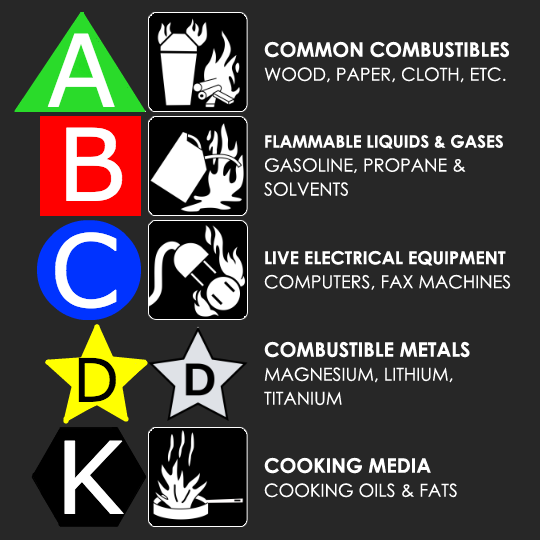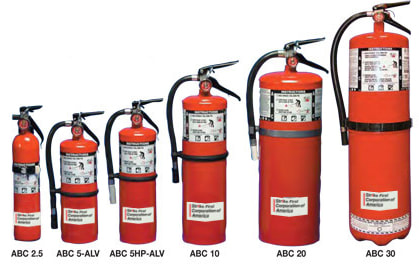|
Proper Use
Fire extinguishers have limits, but when used properly they can save lives and property by putting out a small fire or containing it until the fire department arrives. Portable extinguishers for home use, however, are not designed to fight large or spreading fires, they are useful only under certain conditions.
Pass Procedure
When using a fire extinguisher keep your back to an unobstructed exit and stand 6 to 8 feet away from the fire. Follow the four-step PASS procedure:
Choosing Your Extinguisher
Extinguisher Types Choosing Your Extinguisher depends on knowing the 3 basic classes of fires. There are other classes of fire, however these basic 3 are the most common. All fire extinguishers are labeled using standard symbols for the classes of fire they can put out (see illustration at right). A red slash through any of the symbols tells you the extinguisher cannot be used on that class of fire. A missing symbol tells you that the extinguisher has not been tested for a given class of fire.
Extinguisher Sizes
Portable extinguishers are also rated for the size of fire they can handle. This rating will appear on the label -- for example, 2A:10B:C. The larger the numbers, the larger the fire that the extinguisher can put out, but higher-rated models are often heavier. Make sure you can hold and operate an extinguisher before you buy it. Installation & Maintenance
Extinguishers should be installed in plain view, above the reach of children, near an escape route, and away from stoves or other heating appliances. Extinguishers require routine care. Read your owners manual to learn how to inspect your extinguisher. Follow the manufacturer's instructions on maintenance. Rechargeable models must be serviced after every use (Service companies are listed in the Yellow Pages under "Fire Extinguishers"). Disposable fire extinguishers can be used only once and must be replaced after use. Also to the right is a video on How to install Fire Extinguishers. ------------------------------------> |
|
Location |
|




